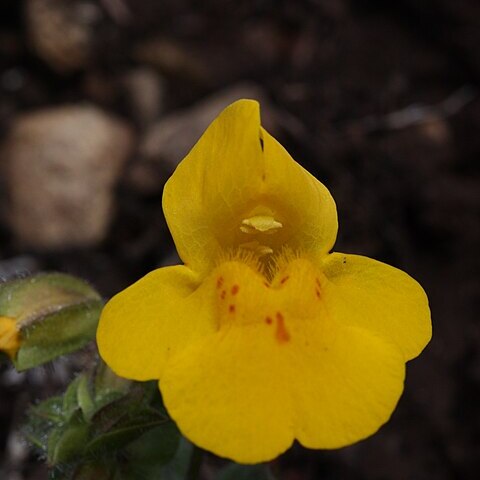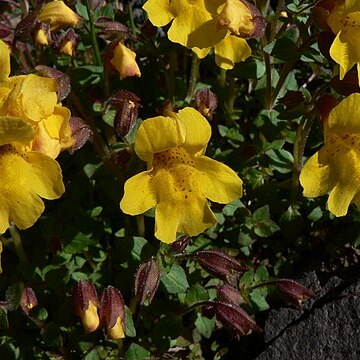Annual or perennial herbs, rarely slightly woody at the base or becoming shrubs, often aquatic or wetland plants, young stems square in cross-section; iridoids absent; plants glabrous or hairy, hairs when present simple, often gland-tipped. Leaves opposite and decussate, petiolate, simple, margins entire or variously toothed, gland-dotted (punctate) or not gland-dotted; stipules absent. Inflorescence a raceme, axillary cyme or solitary in axils; bracts and bracteoles present or absent. Flowers zygomorphic or rarely almost actinomorphic, bisexual, hypogynous, with 2 prophylls. Calyx of (3–) 5 sepals, ± tubular, the sepals connate, the tube lobed or toothed, ribbed or winged below teeth, persistent in fruit. Corolla usually of (2–) 4–5 petals, petals connate, corolla usually bilabiate (with 2 upper and 3 lower lobes), sometimes only slightly so, or with 5 equal lobes, the mouth of corolla sometimes with a palate (i.e. a raised appendage on lower lip of corolla, which partially or completely closes the throat) of variable form and colour. Stamens 4 in pairs of unequal length, or rarely reduced to 2; staminodes absent; anthers dorsifixed, tetrasporangiate, dithecal or sometimes monothecal (in Glossostigma, Microcarpaea, Peplidium) 2-locular or rarely reduced by fusion to 1, often confluent, dehiscing by 2 longitudinal slits. Nectary sometimes present. Gynoecium of two connate carpels, rarely one carpel reduced developmentally (in Phryma, not in Australia). Ovary superior, 2-locular or 1-locular (in Phryma) in when gynoecium is 1-carpellate; style 1, simple, apical; stigma (1-) 2-lobed, expanded, usually sensitive, sometimes 1 reduced. Ovules many or sometimes solitary (in Phryma); placentation axile or intruded parietal, or basal (in Phryma). Fruit usually a loculicidal capsule, usually readily dehiscent, sometimes tardily dehiscent (in Thyridia), or very rarely an achene (in Phryma), enclosed by a persistent calyx, or rarely a berry (in Leucocarpus, not in Australia). Seeds many or rarely 1 (in Phryma), small, surface reticulate and sometimes ribbed or winged, smooth, or tessellate; endosperm present or almost absent, cotyledons convolute.
More
Herbs, annual or perennial [or subshrubs to shrubs], erect, prostrate, creeping to ascending. Stems 4-angular or winged or terete, occasionally highly reduced. Stipules absent. Leaves simple, opposite; leaf blade margin serrate or entire or variously toothed. Inflorescences a terminal [or axillary] spike [or a terminal raceme or a cyme] or flowers solitary and axillary. Flowers perfect, with [or without] a bract and a bracteole. Calyx connate, 5-lobed or dentate; lobes usually less than 1/3 of calyx length. Corolla connate, tubular or cylindric, 2-lipped; lower lip with 3 imbricate lobes; upper lip 2-lobed. Stamens [2 or]4, inserted in corolla tube or exserted, anterior 2 longer; anthers longitudinally dehiscent. Gynoecium of 2 connate carpels; ovary superior, 1-or 2-locular; stigma broadly 2-lobed to 2-lipped, receptive only on inner surface and close together upon contact. Fruit an achene (in Phryma), loculicidal capsule (e.g., in Mimulus Linnaeus) [or occasionally berrylike (in Leucocarpus D. Don)]. Seeds numerous, rarely to 1, with an oblong embryo; endosperm scanty.


